Angels and Demons Read online
Table of Contents
Cover
Copyright
About the Author
Also by Dan Brown
Dedication
Acknowledgments
Fact
Author’s Note
Angels and Demons
Prologue
Chapter 1
Chapter 2
Chapter 3
Chapter 4
Chapter 5
Chapter 6
Chapter 7
Chapter 8
Chapter 9
Chapter 10
Chapter 11
Chapter 12
Chapter 13
Chapter 14
Chapter 15
Chapter 16
Chapter 17
Chapter 18
Chapter 19
Chapter 20
Chapter 21
Chapter 22
Chapter 23
Chapter 24
Chapter 25
Chapter 26
Chapter 27
Chapter 28
Chapter 29
Chapter 30
Chapter 31
Chapter 32
Chapter 33
Chapter 34
Chapter 35
Chapter 36
Chapter 37
Chapter 38
Chapter 39
Chapter 40
Chapter 41
Chapter 42
Chapter 43
Chapter 44
Chapter 45
Chapter 46
Chapter 47
Chapter 48
Chapter 49
Chapter 50
Chapter 51
Chapter 52
Chapter 53
Chapter 54
Chapter 55
Chapter 56
Chapter 57
Chapter 58
Chapter 59
Chapter 60
Chapter 61
Chapter 62
Chapter 63
Chapter 64
Chapter 65
Chapter 66
Chapter 67
Chapter 68
Chapter 69
Chapter 70
Chapter 71
Chapter 72
Chapter 73
Chapter 74
Chapter 75
Chapter 76
Chapter 77
Chapter 78
Chapter 79
Chapter 80
Chapter 81
Chapter 82
Chapter 83
Chapter 84
Chapter 85
Chapter 86
Chapter 87
Chapter 88
Chapter 89
Chapter 90
Chapter 91
Chapter 92
Chapter 93
Chapter 94
Chapter 95
Chapter 96
Chapter 97
Chapter 98
Chapter 99
Chapter 100
Chapter 101
Chapter 102
Chapter 103
Chapter 104
Chapter 105
Chapter 106
Chapter 107
Chapter 108
Chapter 109
Chapter 110
Chapter 111
Chapter 112
Chapter 113
Chapter 114
Chapter 115
Chapter 116
Chapter 117
Chapter 118
Chapter 119
Chapter 120
Chapter 121
Chapter 122
Chapter 123
Chapter 124
Chapter 125
Chapter 126
Chapter 127
Chapter 128
Chapter 129
Chapter 130
Chapter 131
Chapter 132
Chapter 133
Chapter 134
Chapter 135
Chapter 136
Chapter 137
This eBook is copyright material and must not be copied, reproduced, transferred, distributed, leased, licensed or publicly performed or used in any way except as specifically permitted in writing by the publishers, as allowed under the terms and conditions under which it was purchased or as strictly permitted by applicable copyright law. Any unauthorised distribution or use of this text may be a direct infringement of the author’s and publisher’s rights and those responsible may be liable in law accordingly.
Epub ISBN: 9781409083948
Version 1.0
www.randomhouse.co.uk
ANGELS AND DEMONS
A CORGI BOOK : 9780552150736
First publication in Great Britain
PRINTING HISTORY
Corgi edition published 2001
315 317 319 320 318 316 314
Copyright © Dan Brown 2000
Ambigram Artwork © John Langdon
The right of Dan Brown to be identified as the author of this work has been asserted in accordance with sections 77 and 78 of the Copyright, Designs and Patents Act 1988.
In this work of fiction, the characters, places and events are either the product of the author’s imagination or they are used entirely fictitiously. Any resemblance to actual persons, living or dead, is purely coincidental.
Condition of Sale
This book is sold subject to the condition that it shall not, by way of trade or otherwise, be lent, re-sold, hired out or otherwise circulated in any form of binding or cover other than that in which it is published and without a similar condition including this condition being imposed on the subsequent purchaser.
Set in 10/12pt Palatino by
Falcon Oast Graphic Art Ltd
Corgi Books are published by Transworld Publishers, 61–63 Uxbridge Road, London W5 5SA, a division of The Random House Group Ltd.
Addresses for Random House Group Ltd companies outside the UK. can be found at: www.randomhouse.co.uk The Random House Group Ltd Reg. No. 954009
Printed and bound in Great Britain by Cox & Wyman Ltd, Reading, Berkshire.
The Random House Group Limited supports The Forest Stewardship Council (FSC), the leading international forest certification organisation. All our titles that are printed on Greenpeace approved FSC certified paper carry the FSC logo. Our paper procurement policy can be found at: www.rbooks.co.uk/environment
About the Author
Dan Brown is the bestselling author of Digital Fortress, Deception Point, Angels and Demons and The Da Vinci Code. He is a graduate of Amherst College and Phillips Exeter Academy, where he has taught English and creative writing. He lives in New England and can be found on the web at www.danbrownofficial.co.uk.
www.rbooks.co.uk
Also by Dan Brown
DIGITAL FORTRESS
DECEPTION POINT
THE DA VINCI CODE
For Blythe . . .
ACKNOWLEDGMENTS
A debt of gratitude to Emily Bestler, Jason Kaufman, Ben Kaplan, and everyone at Pocket Books for their belief in this project.
To my friend and agent, Jake Elwell, for his enthusiasm and unflagging effort.
To the legendary George Wieser, for convincing me to write novels.
To my dear friend Irv Sittler, for facilitating my audience with the Pope, secreting me into parts of Vatican City few ever see, and making my time in Rome unforgettable.
To one of the most ingenious and gifted artists alive, John Langdon, who rose brilliantly to my impossible challenge and created the ambigrams for this novel.
To Stan Planton, head librarian, Ohio University – Chillicothe, for being my number one source of information on countless topics.
To Sylvia Cavazzini, for her gracious tour through the secret Passetto.
And to the best parents a kid could hope for, Dick and Connie Brown . . . for everything.
Thanks also to CERN, Henry Beckett, Brett Trotter, the Pontifical Academy of Science, Brookhaven Institute, FermiLab Library, Olga Wieser, Don Ulsch of the National Security Institute, Caroline H. Thompson at University of Wales, Kathryn Gerhard and Omar Al Kindi, John Pike and the Federation of American Scientists, Heimlich Viserholder, Corinna and Davis Hammond, Aizaz Ali, the Galileo Project of Rice University, Julie Lynn and Charlie Ryan at Mockingbird Pictures, Gary Goldstein, Dave (Vilas) Arnold and Andra Crawford, the Global Fraternal Network, the Phillips Exeter Academy Library, Jim Barrington, John Maier, the exceptionally keen eye of Margie Wachtel, alt.masonic. members, Alan Wooley, the Library of Congress Vatican Codices Exhibit, Lisa Callamaro and the Callamaro Agency, Jon A. Stowell, Musei Vaticani, Aldo Baggia, Noah Alireza, Harriet Walker, Charles Terry, Micron Electrics, Mindy Renselaer, Nancy and Dick Curtin, Thomas D. Nadeau, NuvoMedia and Rocket E-books, Frank and Sylvia Kennedy, Simon Edwards, Rome Board of Tourism, Maestro Gregory Brown, Val Brown, Werner Brandes, Paul Krupin at Direct Contact, Paul Stark, Tom King at Computalk Network, Sandy and Jerry Nolan, Web guru Linda George, the National Academy of Art in Rome, physicist and fellow scribe Steve Howe, Robert Weston, the Water Street Bookstore in Exeter, New Hampshire, and the Vatican Observatory.
FACT
The world’s largest scientific research facility – Switzerland’s Conseil Européen pour la Recherche Nucléaire (CERN) – recently succeeded in producing the first particles of antimatter. Antimatter is identical to physical matter except that it is composed of particles whose electric charges are opposite to those found in normal matter.
Antimatter is the most powerful energy source known to man. It releases energy with 100 per cent efficiency (nuclear fission is 1.5 per cent efficient). Antimatter creates no pollution or radiation, and a droplet could power New York City for a full day.
There is, however, one catch . . .
Antimatter is highly unstable. It ignites when it comes in contact with absolutely anything . . . even air. A single gram of antimatter contains the energy of a 20-kiloton nuclear bomb – the size of the bomb dropped on Hiroshima.
Until recently antimatter has been created only in very small amounts (a few atoms at a time). But CERN has now broken ground on its new Antiproton Decelerator – an advanced antimatter production facility that promises to create antimatter in much larger quantities.
One question looms: Will this highly volatile substance save the world, or will it be used to create the most deadly weapon ever made?
AUTHOR’S NOTE
References to all works of art, tombs, tunnels, and architecture in Rome are entirely factual (as are their exact locations). They can still be seen today.
The brotherhood of the Illuminati is also factual.
PROLOGUE
Physicist Leonardo Vetra smelled burning flesh, and he knew it was his own. He stared up in terror at the dark figure looming over him. ‘What do you want!’
‘La chiave,’ the raspy voice replied. ‘The password.’
‘But . . . I don’t—’
The intruder pressed down again, grinding the white hot object deeper into Vetra’s chest. There was the hiss of broiling flesh.
Vetra cried out in agony. ‘There is no password!’ He felt himself drifting toward unconsciousness.
The figure glared. ‘Ne avevo paura. I was afraid of that.’
Vetra fought to keep his senses, but the darkness was closing in. His only solace was in knowing his attacker would never obtain what he had come for. A moment later, however, the figure produced a blade and brought it to Vetra’s face. The blade hovered. Carefully. Surgically.
‘For the love of God!’ Vetra screamed. But it was too late.
1
High atop the steps of the Great Pyramid of Giza, a young woman laughed and called down to him. ‘Robert, hurry up! I knew I should have married a younger man!’ Her smile was magic.
He struggled to keep up, but his legs felt like stone. ‘Wait,’ he begged. ‘Please . . .’
As he climbed, his vision began to blur. There was a thundering in his ears. I must reach her! But when he looked up again, the woman had disappeared. In her place stood an old man with rotting teeth. The man stared down, curling his lips into a lonely grimace. Then he let out a scream of anguish that resounded across the desert.
Robert Langdon awoke with a start from his nightmare. The phone beside his bed was ringing. Dazed, he picked up the receiver.
‘Hello?’
‘I’m looking for Robert Langdon,’ a man’s voice said.
Langdon sat up in his empty bed and tried to clear his mind. ‘This . . . is Robert Langdon.’ He squinted at his digital clock. It was 5.18 a.m.
‘I must see you immediately.’
‘Who is this?’
‘My name is Maximilian Kohler. I’m a discrete particle physicist.’
‘A what?’ Langdon could barely focus. ‘Are you sure you’ve got the right Langdon?’
‘You’re a professor of religious iconology at Harvard University. You’ve written three books on symbology and—’
‘Do you know what time it is?’
‘I apologize. I have something you need to see. I can’t discuss it on the phone.’
A knowing groan escaped Langdon’s lips. This had happened before. One of the perils of writing books about religious symbology was the calls from religious zealots who wanted him to confirm their latest sign from God. Last month, a stripper from Oklahoma had promised Langdon the best sex of his life if he would fly down and verify the authenticity of a cruciform that had magically appeared on her bed sheets. The Shroud of Tulsa, Langdon had called it.
‘How did you get my number?’ Langdon tried to be polite, despite the hour.
‘On the Worldwide Web. The site for your book.’
Langdon frowned. He was damn sure his book’s site did not include his home phone number. The man was obviously lying.
‘I need to see you,’ the caller insisted. ‘I’ll pay you well.’
Now Langdon was getting mad. ‘I’m sorry, but I really—’
‘If you leave immediately, you can be here by—’
‘I’m not going anywhere! It’s five o’clock in the morning!’ Langdon hung up and collapsed back in bed. He closed his eyes and tried to fall back asleep. It was no use. The dream was emblazoned in his mind. Reluctantly, he put on his robe and went downstairs.
Robert Langdon wandered barefoot through his deserted Massachusetts Victorian home and nursed his ritual insomnia remedy – a mug of steaming Nestlé’s Quik. The April moon filtered through the bay windows and played on the oriental carpets. Langdon’s colleagues often joked that his place looked more like an anthropology museum than a home. His shelves were packed with religious artifacts from around the world – an ekuaba from Ghana, a gold cross from Spain, a cycladic idol from the Aegean, and even a rare woven boccus from Borneo, a young warrior’s symbol of perpetual youth.
As Langdon sat on his brass Maharishi’s chest and savored the warmth of the chocolate, the bay window caught his reflection. The image was distorted and pale . . . like a ghost. An aging ghost, he thought, cruelly reminded that his youthful spirit was living in a mortal shell.
Although not overly handsome in a classical sense, the forty-five-year-old Langdon had what his female colleagues referred to as an ‘erudite’ appeal – wisps of gray in his thick brown hair, probing blue eyes, an arrestingly deep voice, and the strong, carefree smile of a collegiate athlete. A varsity diver in prep school and college, Langdon still had the body of a swimmer, a toned, six-foot physique that he vigilantly maintained with fifty laps a day in the university pool.
Langdon’s friends had always viewed him as a bit of an enigma – a man caught between centuries. On weekends he could be seen lounging on the quad in blue jeans, discussing computer graphics or religious history with students; other times he could be spotted
in his Harris tweed and paisley vest, photographed in the pages of upscale art magazines at museum openings where he had been asked to lecture.
Although a tough teacher and strict disciplinarian, Langdon was the first to embrace what he hailed as the ‘lost art of good clean fun.’ He relished recreation with an infectious fanaticism that had earned him a fraternal acceptance among his students. His campus nickname – ‘The Dolphin’ – was a reference both to his affable nature and his legendary ability to dive into a pool and outmaneuver the entire opposing squad in a water polo match.
As Langdon sat alone, absently gazing into the darkness, the silence of his home was shattered again, this time by the ring of his fax machine. Too exhausted to be annoyed, Langdon forced a tired chuckle.
God’s people, he thought. Two thousand years of waiting for their Messiah, and they’re still persistent as hell.
Wearily, he returned his empty mug to the kitchen and walked slowly to his oak-paneled study. The incoming fax lay in the tray. Sighing, he scooped up the paper and looked at it.
Instantly, a wave of nausea hit him.
The image on the page was that of a human corpse. The body had been stripped naked, and its head had been twisted, facing completely backward. On the victim’s chest was a terrible burn. The man had been branded . . . imprinted with a single word. It was a word Langdon knew well. Very well. He stared at the ornate lettering in disbelief.
‘Illuminati,’ he stammered, his heart pounding. It can’t be . . .
In slow motion, afraid of what he was about to witness, Langdon rotated the fax 180 degrees. He looked at the word upside down.
Instantly, the breath went out of him. It was like he had been hit by a truck. Barely able to believe his eyes, he rotated the fax again, reading the brand right-side up and then upside down.
‘Illuminati,’ he whispered.
Stunned, Langdon collapsed in a chair. He sat a moment in utter bewilderment. Gradually, his eyes were drawn to the blinking red light on his fax machine. Whoever had sent this fax was still on the line . . . waiting to talk. Langdon gazed at the blinking light a long time.
Then, trembling, he picked up the receiver.
2
‘Do I have your attention now?’ the man’s voice said when Langdon finally answered the line.

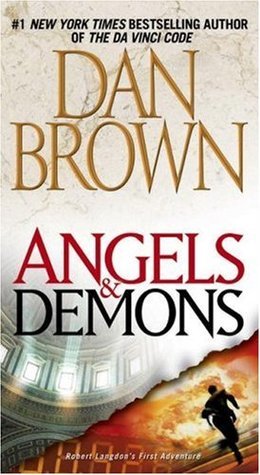 Angels & Demons
Angels & Demons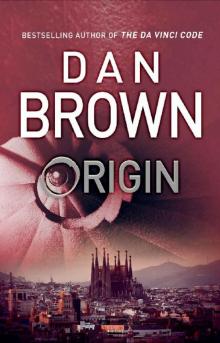 Origin
Origin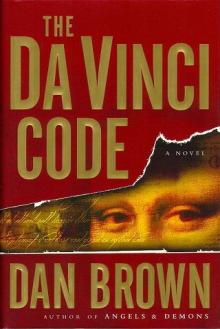 The Da Vinci Code
The Da Vinci Code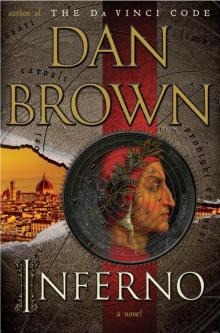 Inferno
Inferno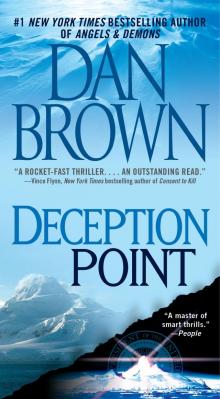 Deception Point
Deception Point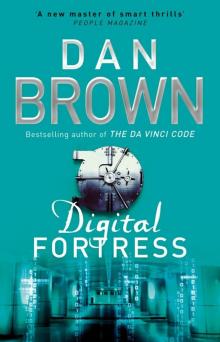 Digital Fortress
Digital Fortress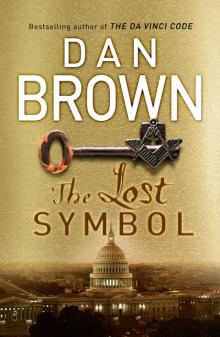 The Lost Symbol
The Lost Symbol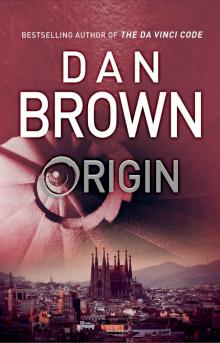 Origin: (Robert Langdon Book 5)
Origin: (Robert Langdon Book 5)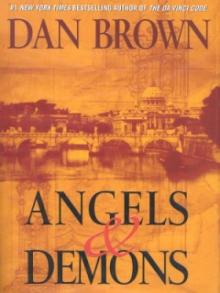 Angles & Demons
Angles & Demons Inferno: A Novel
Inferno: A Novel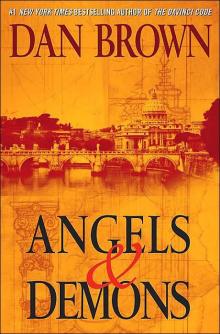 Angels & Demons rl-1
Angels & Demons rl-1 The Great Expectations School
The Great Expectations School The Lost Symbol rl-3
The Lost Symbol rl-3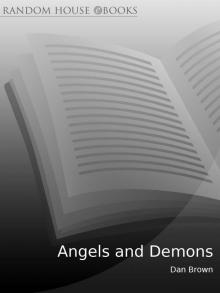 Angels and Demons
Angels and Demons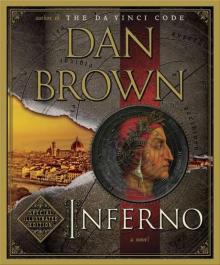 Inferno: Special Illustrated Edition: Featuring Robert Langdon
Inferno: Special Illustrated Edition: Featuring Robert Langdon